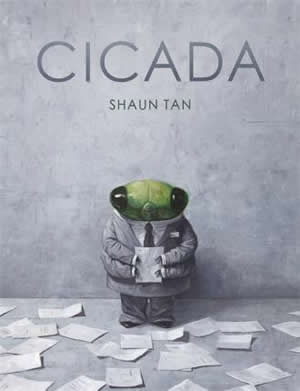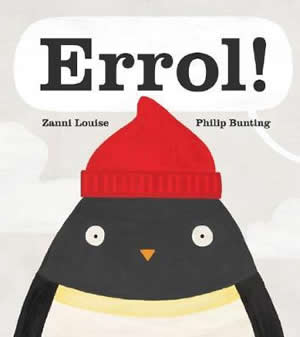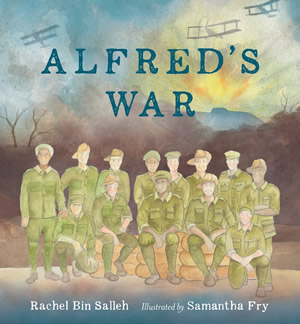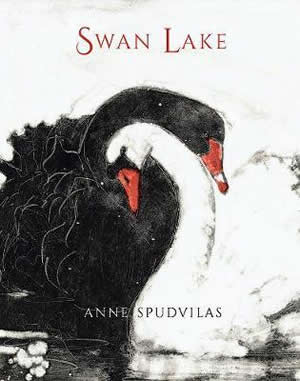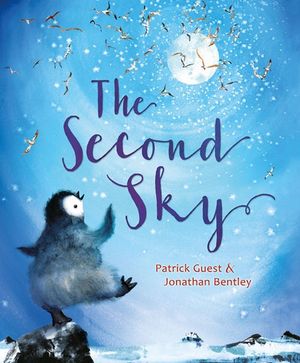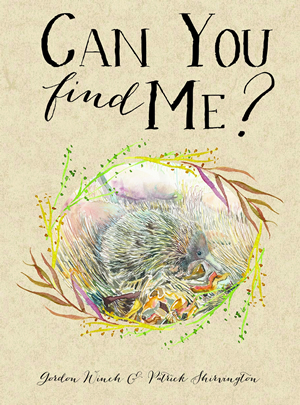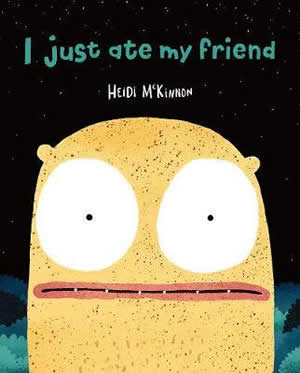Cicada By Shaun Tan, Hachette Australia, 2018. ‘Cicada tell story. Story good. Story simple. Story even human can understand. Tok Tok Tok!’ Cicada is written very differently to other children’s books I’ve read. Its staccato text is reminiscent of people who have English as a second language. Tok Tok Tok! We feel sorry for Cicada as he works hard all day for very little pay and poor conditions. He is bullied by his coworkers. Tok Tok Tok! The repetition of Tok Tok Tok! works well. During the pages where Cicada is tormented by his life and his workplace, the illustrations only appear on the righthand page with the simple text on a white lefthand page. Until Cicada retires from his office job…then we see full-colour double-page spreads with no text, where we watch cicada transform! This is also an unusual approach to a kids picture book. The illustrations by Shaun Tan, as always, are artistic masterpieces. Cicada Book Trailer
Errol! By Zanni Louise and Philip Bunting, Scholastic Press, 2018. ‘Errol refuses to follow his mum. Even when she counts to three.’ Firstly, what a great name for a penguin! Errol! is a very stubborn little Antarctic penguin, and his disobedience frustrates his mother no end. Errol refuses to follow his mum when she calls him, even when she counts to three! One…Two…Three! And still, Errol does not follow his mother. I think every mother and every child can relate to this story, no matter how old they are. Even as adults we would all remember our own mother counting to three and then either walking away without us, or losing it in some other way that isn’t PC to mention these days! Why is Errol not following his mum? Because he has some adventurous ideas of his own! When Errol’s mother thinks she’s lost him under the snow, she cries, but we soon discover that Errol has embarked on his own adventures beneath the surface. Errol soon pops his head back up out of the snow and calls to his mother, then calls again. When she doesn’t respond he tells her he’s going to count to three. Well, this…
Alfred’s War By Rachel Bin Salleh and Samantha Fry, Magabala Books, 2018. ‘Alfred’s War opens our hearts to the contribution and sacrifice that Aboriginal and Torres Strait Islander veterans made to Australian’s war efforts.’ Alfred is a first Australian who lives outside, sleeps on park benches and under trees. He enlisted in the army as a young man and sailed off to fight in the first world war. His comrades meant a lot to him, and even when he returned home after the war he often thought of them. They even appeared in his dreams. Alfred’s War is not the same as other the men’s war, as he is one of the forgotten soldiers, one of the unnamed men. There is a double-page spread at the end of the book that explains how Aboriginal and Torres Strait Islanders were enlisted to fight in wars that Australia has been involved in. Alfred’s War highlights the lack of recognition of the Australian Aboriginal and Torres Strait Islander servicemen. While they were afforded equal pay and were considered equal among their mates, their service was not acknowledged upon their return. It is only more recently that their service and sacrifice has been acknowledged. Download…
Swan Lake By Anne Spudvilas, Allen and Unwin, 2017. Divided into three acts, the children’s picture book, Swan Lake, follows a similar format to the ballet. This is a clever structural technique used by the author/illustrator. The book has slightly more pages than a traditional picture book, the pages are thicker, and the book overall has a high-quality feel to it. This iconic ballet is a tragic love story of a princess who is turned into a swan by an evil sorcerer. The book is set against the riverscape of the Murray-Darling basin, the longest river in Australia. Anne Spudvilas depicts this classic tale of passion, betrayal, and heartbreak with elegant and dramatic illustrations. Swan Lake is a classic story folded into a modern format. Awards Shortlisted for Picture Book of the Year 2018 by Children’s Book Council of Australia.
Tintinnabula By Margo Lanagan and Rovina Cai, Little Hare, 2017. ‘In wild times and in wartime, in times of fear and illness, I go to Tintinnabula, where soft rains fall.’ The landscape is barren and bleak, with skeletal trees bending to the elements. Rain slices down on the ruins of a building; the chiaroscuro of shadows adding depth to the desolate. A small figure approaches a large opening in the ruins leading to nowhere…or is it? Tintinnabula opens with dark and frightening creatures dominating the small figure of a girl in the bottom corner of the page. They could be inner demons or outer demons. They are very visible though. The illustrations are haunting and emotive and move directionally through the pages. The girl running, tearing, in an effort to be free of the demons on her tail. Always, there is a glimpse of a lighter place, a safer place, but it is far from an immediate reach. And still, the demons come. A feather. A whisp. The faceless character runs through pages following a white bird, until we finally meet her face-to-face, when she arrives in Tintinnabula. The overall colour palette changes from dark and red, to light and…
The Second Sky By Patrick Guest and Jonathan Bentley, Little Hare, 2017. ‘Great things happen when we reach for the sky.’ Little Gilbert is a dreamer. He is a little penguin with big clumsy feet and small little wings and he can’t fly up to where the other birds soar; where he wants to be. The Second Sky is a delightful story about one penguin’s determination and drive to not give up on his dream at any cost. But what Gilbert discovers is that there are some things that he cannot be, just like a person with brown eyes can’t ever have blue eyes, in the same way that fish can’t climb trees. On one of his attempts to fly like the albatross, Gilbert climbs high up the mountain and throws himself off, only to find himself…slipping…spinning…stumbling…tumbling down to the bottom and beyond into the sea, where he tumbles…bubbles and sinks. Here underneath the surface of the ocean he finds another world similar and equally as beautiful as the world above the surface of the water. Gilbert overcomes his obstacles, discovers his hidden talents, and learns to fly under the sea. He spreads his wings and… Awards Shortlisted for Children’s…
Exploring Soils: A Hidden World Underground By Samantha Grover and Camille Heisler, CSIRO Publishing, 2017. ‘Have you ever wondered what happens in the earth underneath us?’ Journey with James as he learns that there is more to dirt than meets the eye. James wants to be a soil scientist, and he explores the ‘hidden world underground’. He learns about the differences between clay, silt and sand particles, and discovers what each soil type can be used for. Exploring Soils: A Hidden World Underground takes children on a journey into and under the earth. A wonderful resource not only for parents and grandparents but also for pre-school and primary schools. Teacher’s notes are also available from the CSIRO. The illustrations are drawn sensitively, and the level of detail in the insects is impressive. Ideal for the budding gardener. As an adult, even I learned things from this book! For example, I had never heard of Clorpt before 🙂 Suitable for ages 6 to 9 years. The book raises questions, such as: What is soil? How does it change? Why is it important? What can we do with soil? Awards Children’s Book Council of Australia 2018 notable books under the Eve Pownall Award for Information Books….
Can You Find Me? By Gordon Winch and Shirvington Patrick, New Frontier Publishing, 2017. Can You Find Me? is a delightful story about Australian animals hiding in their natural habitat. Journey along with your child as he or she discovers the animals hiding in the pictures. Even I had to search for a few of them the first time around! There is a lovely repetition on the pages, creating a rhythm to the story. Can You Find Me? teaches children about camouflage and about how animals, insects, and other creatures are often designed to reflect their environment. Can you find all the creatures hiding within the pages of this book?
I Just Ate My Friend By Heidi McKinnon, Allen & Unwin, 2017. ‘I just ate my friend. He was a good friend. But now he is gone. Would you be my friend?’ I think your child will love I Just Ate My Friend! This hilarious and quirky little book will delight readers of all ages. Even the grown-ups will have a giggle! The main character ate his friend and is searching for a new friend, but what will happen when he does find a new friend? I have it on good authority that the author has never actually eaten any of her friends, nor does she recommend it. Awards Shortlisted for The Crichton Award, 2018. Longlisted for Children’s Picture Book of the Year 2018. Longlisted for Australian Book Industry Awards, 2018. Longlisted for Indie Book Awards – Children’s Fiction, 2018.
Why Do Families Change? By Dr Jillian Roberts and Cindy Revell, Orca Book Publishers, 2017. ‘A reassuring and straightforward explanation of separation and divorce.’ Are you and your family experience separation or divorce and don’t know how to talk to your children about it? Why Do Families Change? opens with ‘Many animals in nature choose lifelong mates’. On the opening double page spread, we see three sets of paired birds and three sets of paired couples, including one same-sex couple. The following page continues in this light with more couples from different cultures getting married, as well as another same-sex couple. It stresses that some couples choose to have a common-law relationship where they live together but don’t actually get married. Why Do Families Change? presents a very open-minded view of the different types of relationships that are possible. It gently introduces children to the fact that some people stay married for their whole lives, while others separate or divorce. The story goes on to explain what separation is, and what divorce is, and why these changes can happen. Why Do Families Change? addresses the all-important issue that many children face, ‘Is it my fault?’. No matter how old your children are, there…


